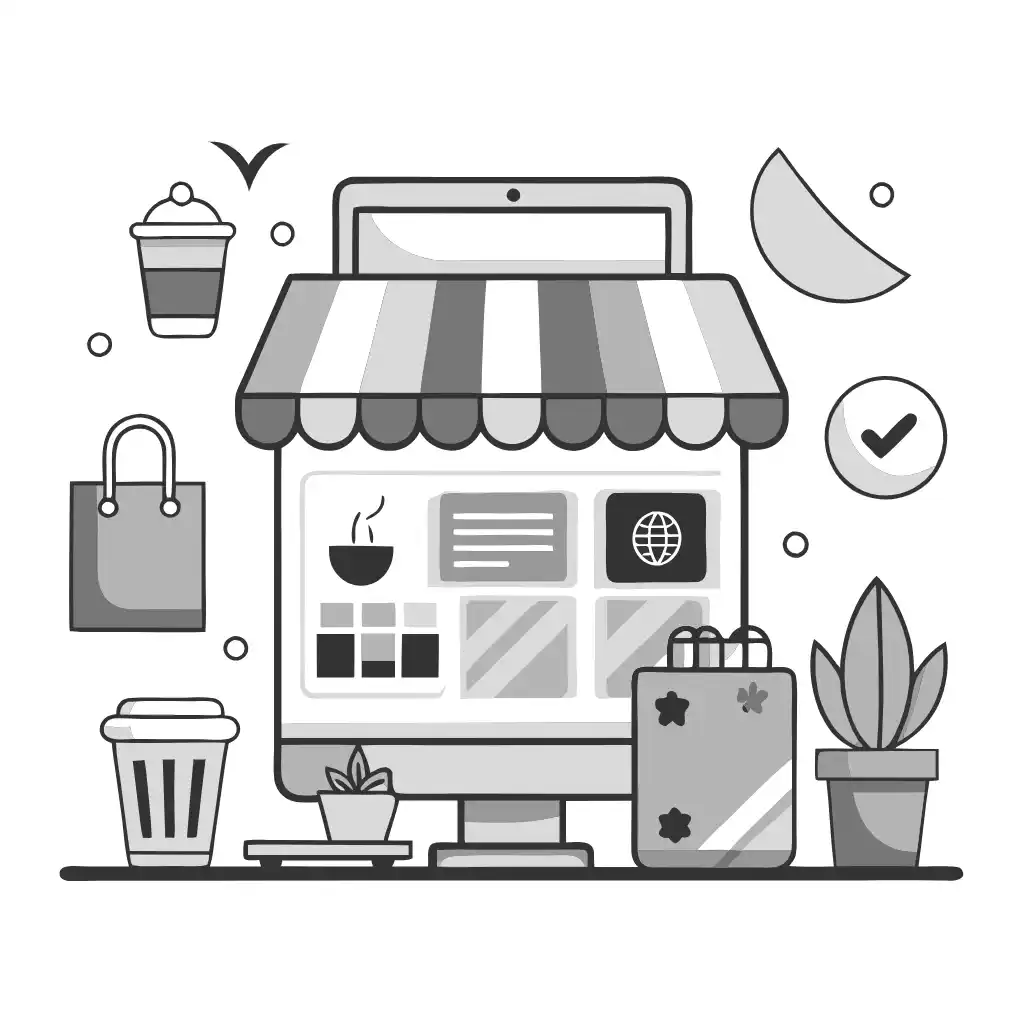Customizing Your WooCommerce Product Pages for Optimal Appeal with ConveyThis
Enhancing International E-commerce: Leveraging WooCommerce for Global Outreach
WooCommerce is a boon for online merchants who are focused on creating a global presence in e-commerce.
For instance, you could deploy a WooCommerce-compatible extension like to offer multiple languages across your complete online shop (including WooCommerce merchandise pages), thus expanding your reach to customers globally, much like Amazon.
This article will guide you on enhancing your WooCommerce product pages for superior conversion rates using a range of WooCommerce extensions, add-ons, and strategies, including how to:
Intelligently order your merchandise pages using a template Strategically structure your product details with a product template Ensure images are aligned with your target audience Simplify language and currency switching for your clients Ensure easy accessibility to the ‘add to cart’ button within your product layout.

Refining Product Display: Utilizing WooCommerce for Enhanced Market Expansion
If you’ve been leveraging WooCommerce for your online retailing, you might be aware that your merchandise is arranged chronologically by default. This implies the most recently included products appear first, and those added earlier are displayed last.
For those looking to explore new market arenas, you need to have a refined control over the front-end display of your products.
For instance, you might prefer organizing WooCommerce products based on aspects like:
Product cost (ascending or descending) Demand (best sellers first) Product evaluation and feedback (products with superior ratings or reviews first) Luckily, the complimentary WooCommerce Extra Product Sorting Options extension allows you to define the organization of products on your main retail page. To begin, install and activate the extension on your WordPress site.
Post activation, navigate to Appearance > Customize > WooCommerce > Product Catalog.
Here, you’ll find different configurations for your main retail page product sorting. Use the Default product sorting dropdown to decide the default organization for WooCommerce:
Default sorting Demand Average evaluation Sort by latest Sort by cost (ascending) Sort by cost (descending) Moreover, you can assign a label to your new default sorting. If you choose Demand, for instance, you could label it Sort by Demand. This will be displayed on your site’s front-end. Lastly, you can choose sorting options to include in your store and determine the quantity of products to display per row and per page using a custom template.
Click Publish to save your changes. Voila! Your WooCommerce products are now organized according to your custom template.
Next, let’s look at an alternative method for product sorting. This lets you determine the exact position of each product via a distinct custom template.
Navigate to Products > All Products, hover over a product, and click the Edit link. Then, scroll down to the Product data section and click on the Advanced tab. From here, you can use the Menu Order option to set this item’s precise position.
These organization options are invaluable for e-stores with hundreds of products with individual product meta. It provides the owners with the flexibility to highlight desired products (for promotional purposes, for example). It also improves the customer’s shopping journey by aiding them in finding the products that pique their interest.
Efficient Display of Goods: Revamping Your WooCommerce for Boosted Customer Interaction
WooCommerce platforms often showcase a wealth of product details, including personalized fields you institute.
It’s ideal to exhibit these product specifications in an efficient manner on your site’s interface for numerous motives. If your consumer base spans globally, you may need to adhere to the distinct transparency laws in each territory you cater to. These laws may vary drastically, hence a child theme akin to Divi could be beneficial for diverse sites.
By tailoring your WooCommerce product layout, you can arrange this information in an eye-catching manner. This conveys to customers that you value transparency about product details, which bolsters your brand image and repute.
Key aspects to consider include:
Navigational aids. These help consumers trace the path to their selected product, facilitating quick access to related goods and other site areas, thereby broadening their brand knowledge. Fundamental product details. Crucial details like product name and price need to be visibly displayed, assisting in SEO endeavors and better search engine ranking. Product synopsis and stock status. A brief overview allows customers to understand the product, while stock status avoids unnecessary queries about availability. Purchase prompt. Information regarding quantity, size, color options, and “add to cart” buttons should be easily accessible, eliminating unnecessary scrolling. Product metadata. Product SKU provides additional information, varying across companies and naming schemes. It could include details like size, color, price, and manufacturer information. Reputation indicators. Ratings and reviews provide social proof, aiding consumers in making informed decisions. Extra specifications. Technical details and other relevant data in your product template can be especially useful for tech product vendors, enhancing trust and professional appeal. Upselling opportunities. Display related or frequently bought together items to leverage upselling. A “You may also like” section or suggesting add-ons can motivate customers to increase their purchase volume.


Harnessing the Power of Visual Diversity: Adapting WooCommerce for Global Markets
Did you realize that globally, cultural differences translate into unique expectations for product image styles? Absolutely!
Take, for instance, the preferences of Chinese consumers. They tend to favor content-dense platforms, appreciating product visuals enhanced with explanatory icons and text. Despite this sort of richly annotated imagery potentially appearing congested to Western consumers, it’s anticipated to boost your sales velocity within the Chinese WordPress community.
The initial stage to localizing your WooCommerce product pages for diverse demographics could be achieved by utilizing a WordPress plugin that aids in content adaptation.
Such a tool allows for the customization of media elements, including images, thereby enabling the display of distinct product visuals for various languages on your WooCommerce platform. This eliminates the need for tinkering with your WooCommerce page’s PHP file, the content-single-product.php file, or your WordPress site’s HTML and CSS.
Expanding Your WooCommerce Store's Global Reach: Multilingual and Multi-Currency Capabilities Unleashed
To succeed in the global market, it’s essential to make your WooCommerce store accessible to customers worldwide. One way to achieve this is by translating your entire WordPress website, including checkout forms and product pages, into multiple languages.
ConveThis, an impressive translation plugin for WordPress, comes to the rescue by simplifying the translation process. Compatible with all WooCommerce templates and WordPress themes like Storefront and Divi, ConveThis effortlessly generates an auto-translated version of your website. No more starting from scratch! You can easily fine-tune these translations using the convenient list editor or visual editor, all without delving into the content-single-product.php file.
But that’s not all. ConveThis takes it a step further by offering seamless integration with professional editing services. With a few clicks in your ConveThis dashboard, you can enlist the expertise of professional translators to refine your translations, ensuring linguistic accuracy and cultural appropriateness.
Now, let’s talk about currencies. Online payments can be a breeze with the help of WOOCS – Currency Switcher for WooCommerce. This free plugin empowers your customers to switch product prices to their preferred currency, utilizing real-time exchange rates and configurable product tabs. From USD to EUR, GBP to JPY, customers can make purchases using the currency they are most comfortable with. Plus, you have the freedom to add any currency to your WooCommerce store, catering to the diverse needs of your international clientele.
With ConveThis and WOOCS by your side, your WooCommerce store can break barriers and expand its global reach. Embrace multilingual capabilities and multi-currency functionality to attract customers from around the world, providing them with a personalized and seamless shopping experience.

Transforming User Experience: Unconventional Fusion and Streamlined Exploration for WooCommerce Single Product Pages
To curate an extraordinary shopping voyage and mitigate cart abandonment rates, it is paramount to embrace alternative methodologies for seamlessly amalgamating the add to cart button and checkout links on your WooCommerce single product pages. Explore the subsequent strategies to optimize the user experience:
- Embrace Innovative Fusion: Diverge from orthodox approaches and welcome imaginative techniques to harmoniously fuse the add to cart button and checkout links. Venture into captivating design elements like dynamic buttons or floating icons that enthrall users’ attention, seamlessly blending with the overall visual allure of the page.
- Streamline Exploration for Effortless Navigation: Simplify the user’s path by streamlining the navigation process. Opt for a refined design that emphasizes clarity and effectively directs users’ focus to pivotal components. Embrace an uncluttered and minimalist layout that ensures consistent visibility of the add to cart button and checkout links, avoiding overwhelming the page.
By implementing these strategies astutely, you can revolutionize the user experience, ensuring a flawless integration of cart and checkout functionalities into your WooCommerce store’s design. This empowers customers to effortlessly add products to their cart and proceed to checkout, fostering a seamless and gratifying shopping expedition.
Remember, the triumph of your WooCommerce store hinges on delivering an exceptional purchasing odyssey. By embracing inventive fusion and streamlined navigation, you can heighten customer satisfaction, diminish cart abandonment rates, and elevate the conversion rates to unprecedented levels.
Translation, far more than just knowing languages, is a complex process.
By following our tips and using ConveyThis , your translated pages will resonate with your audience, feeling native to the target language.
While it demands effort, the result is rewarding. If you’re translating a website, ConveyThis can save you hours with automated machine translation.
Try ConveyThis free for 7 days!